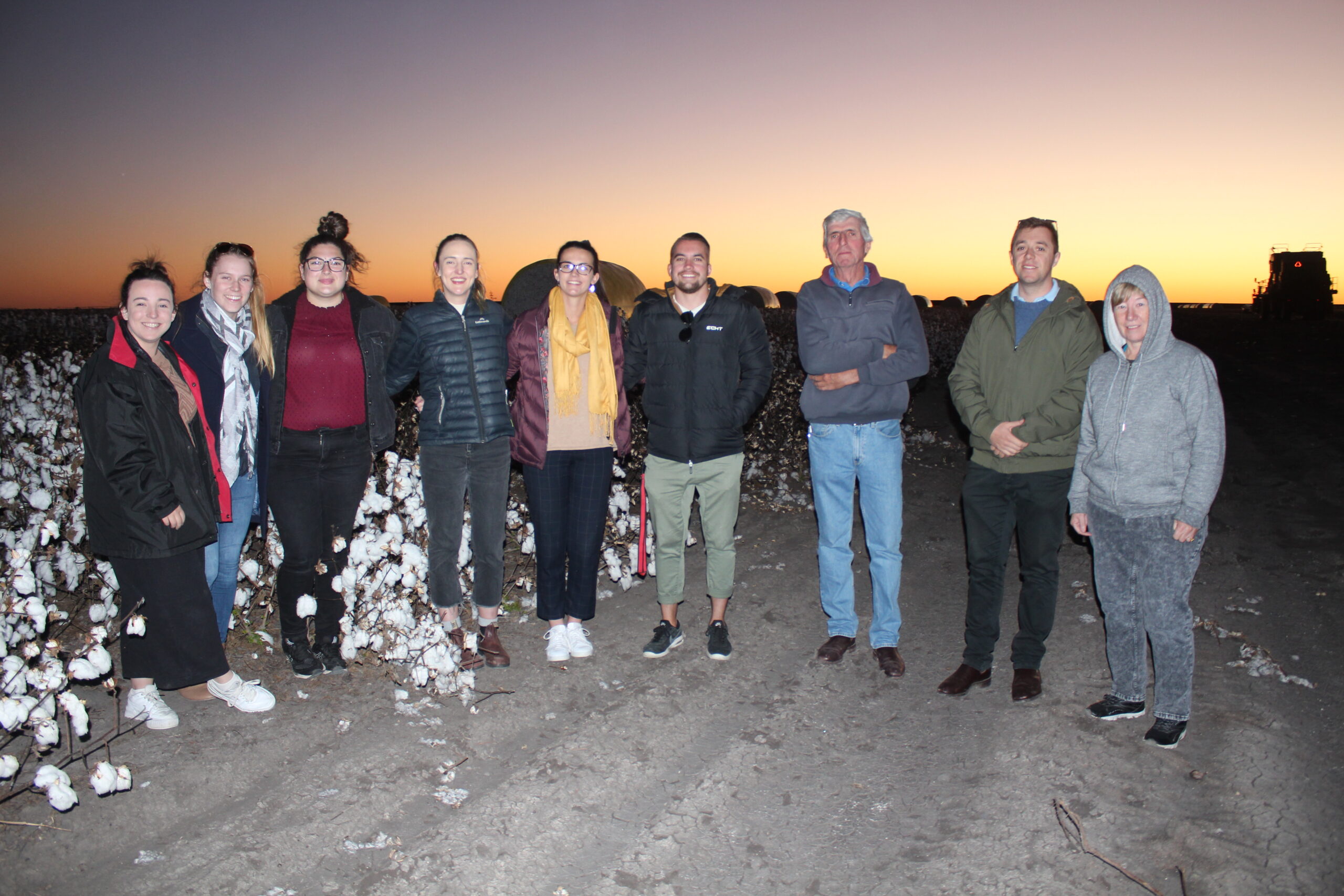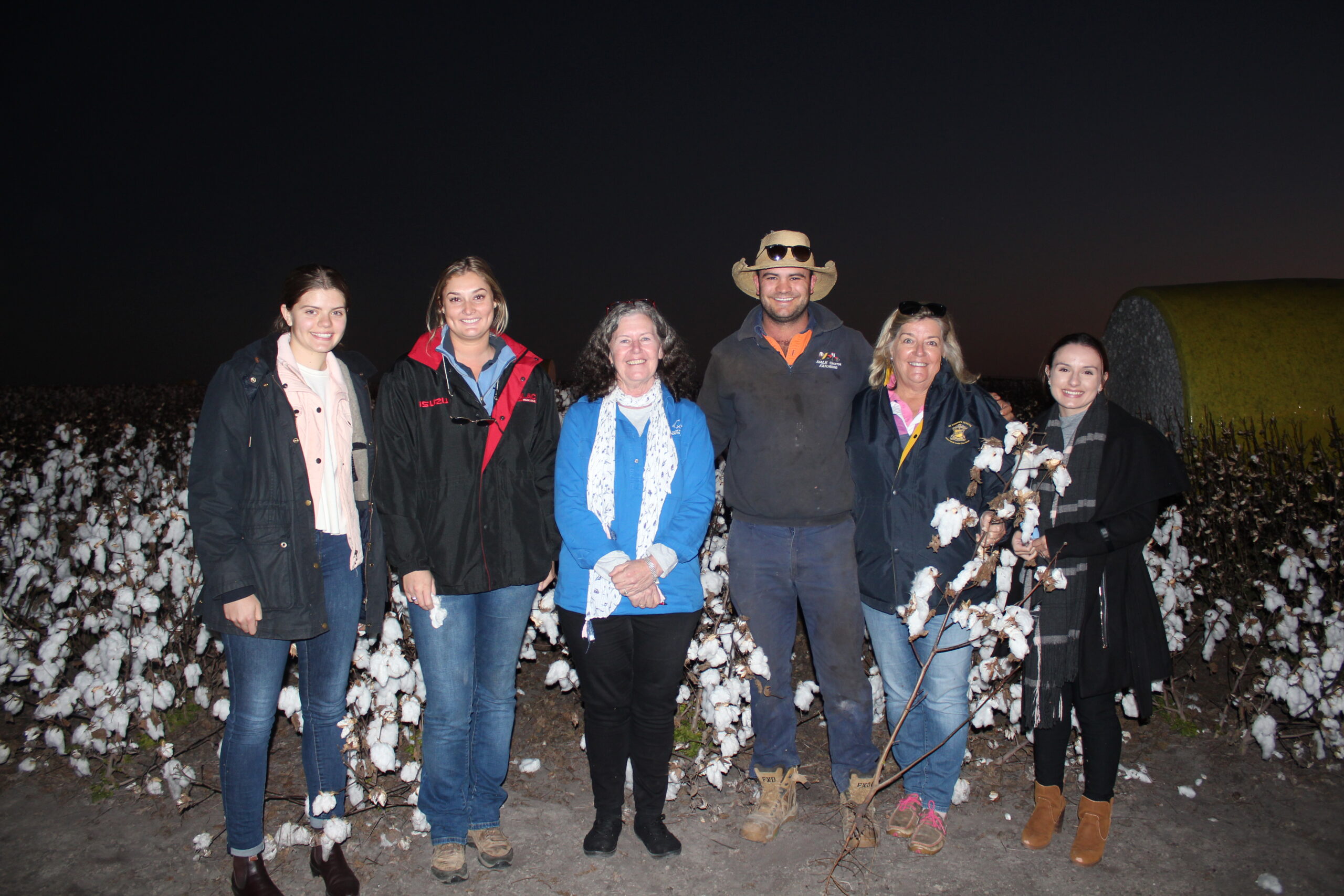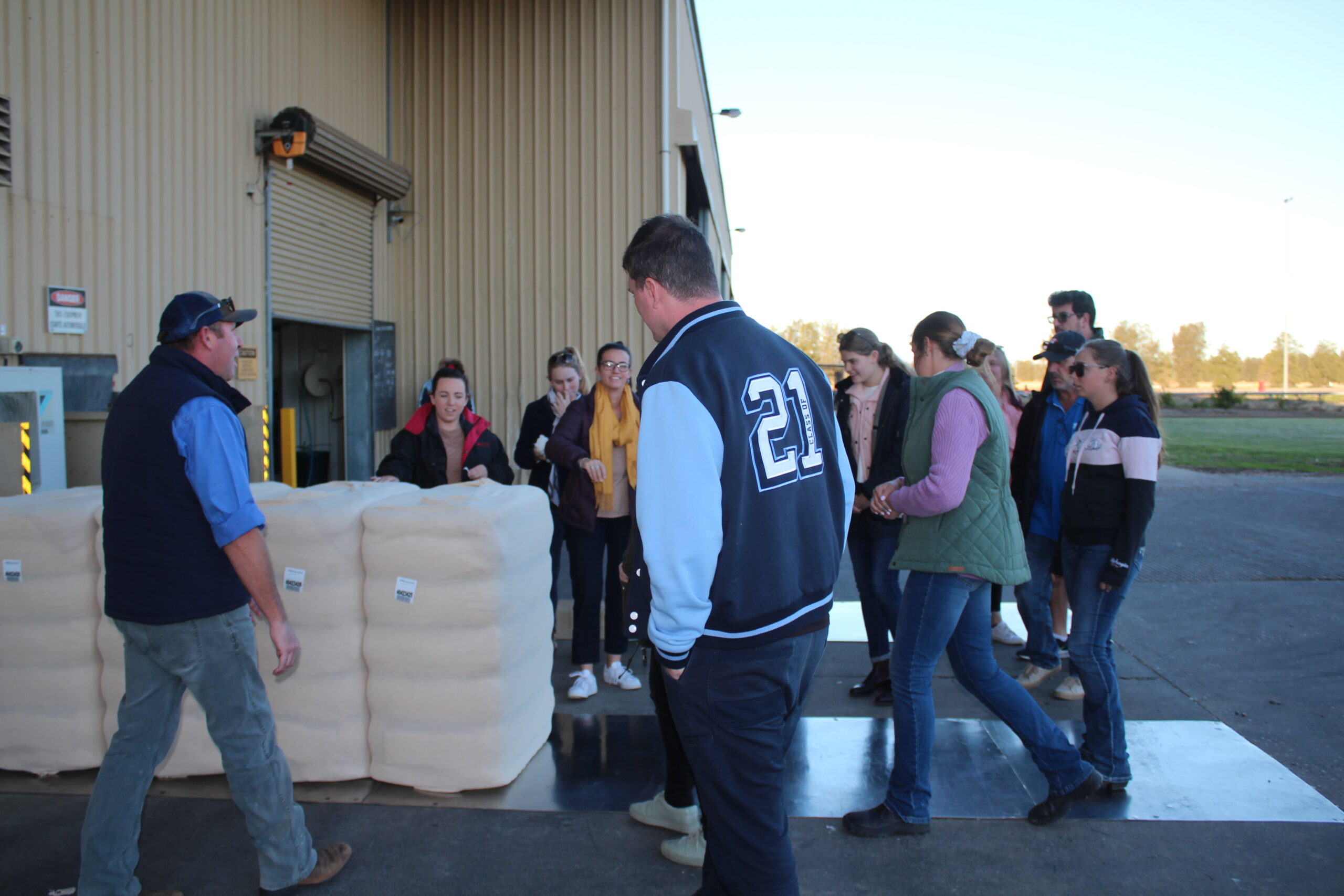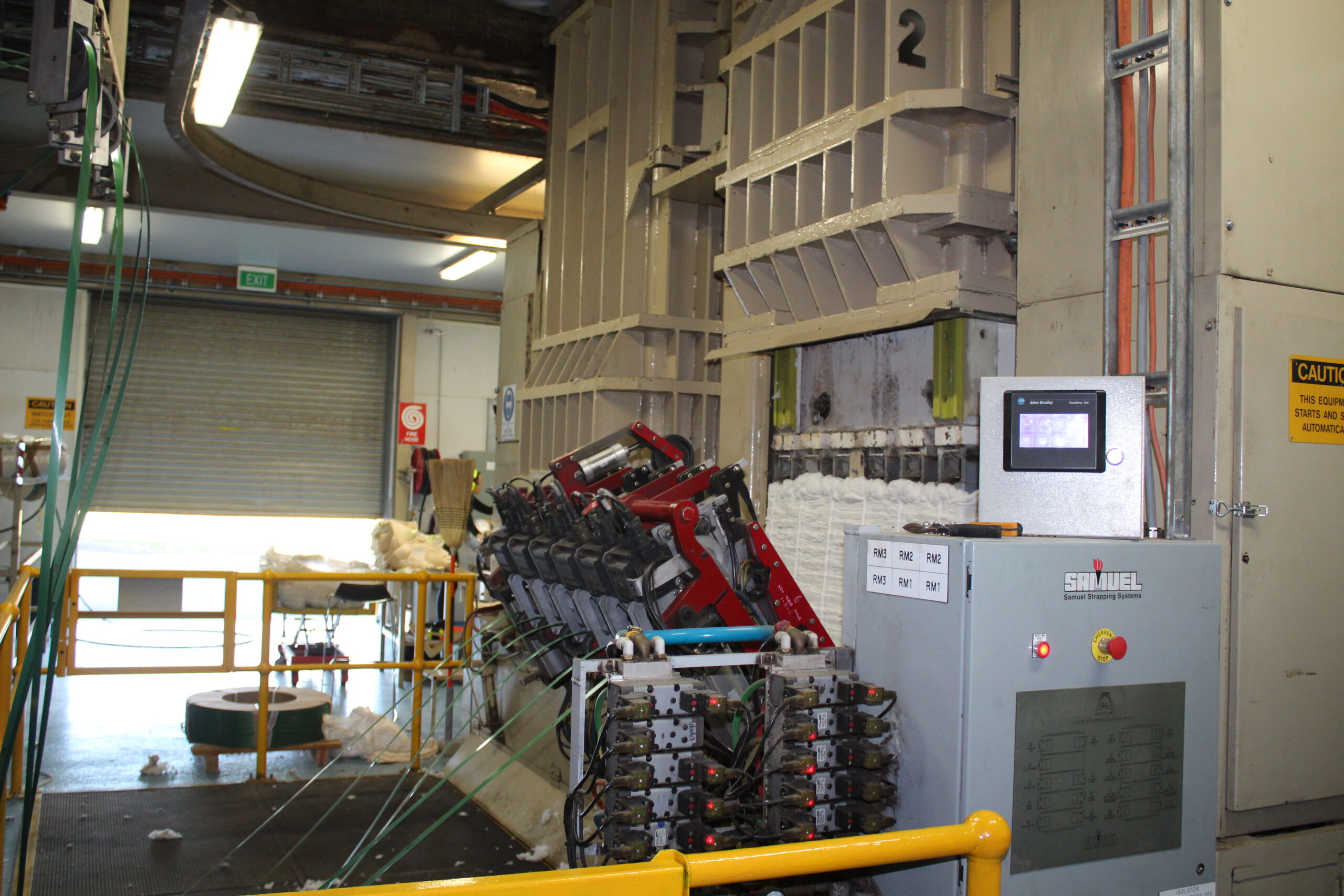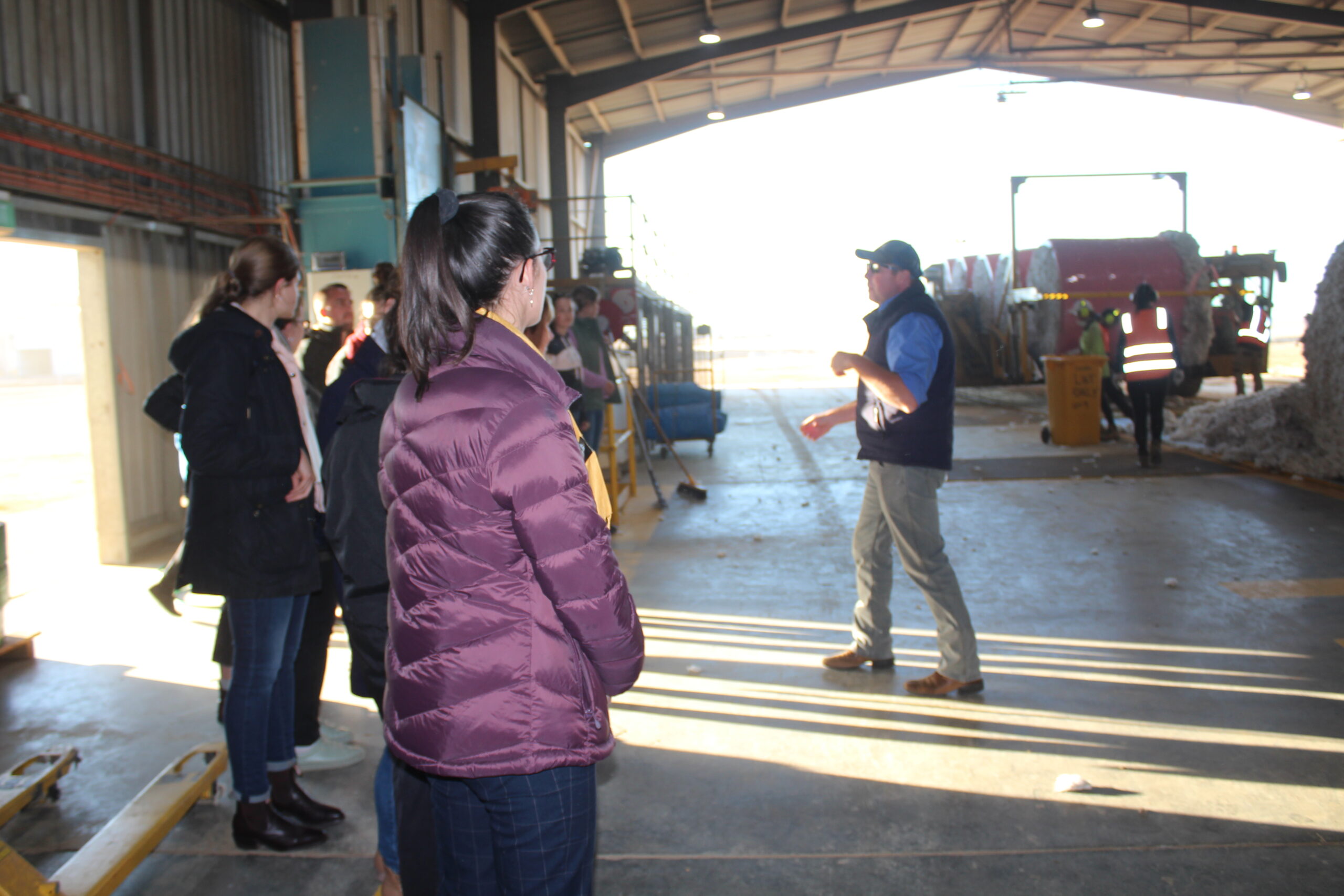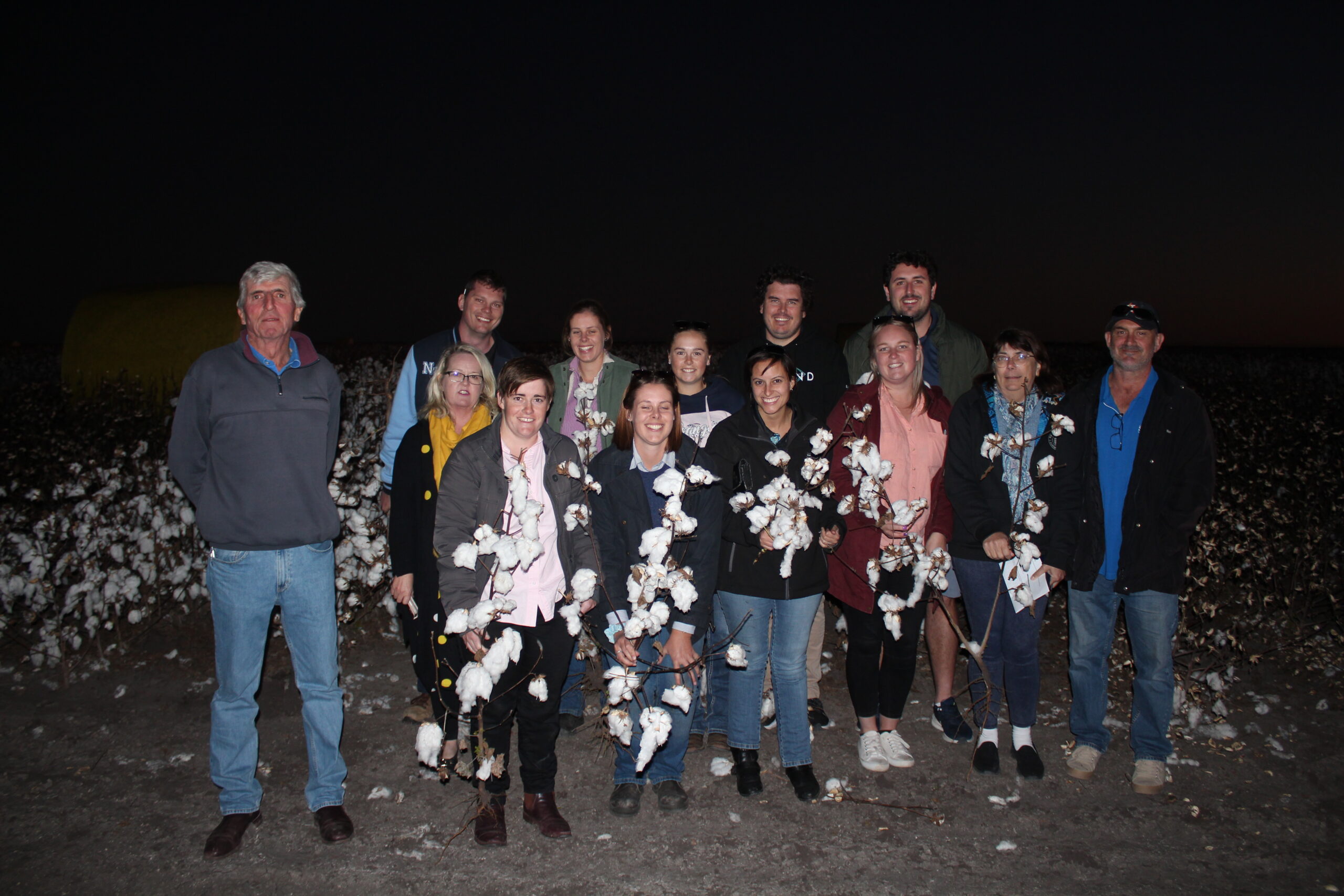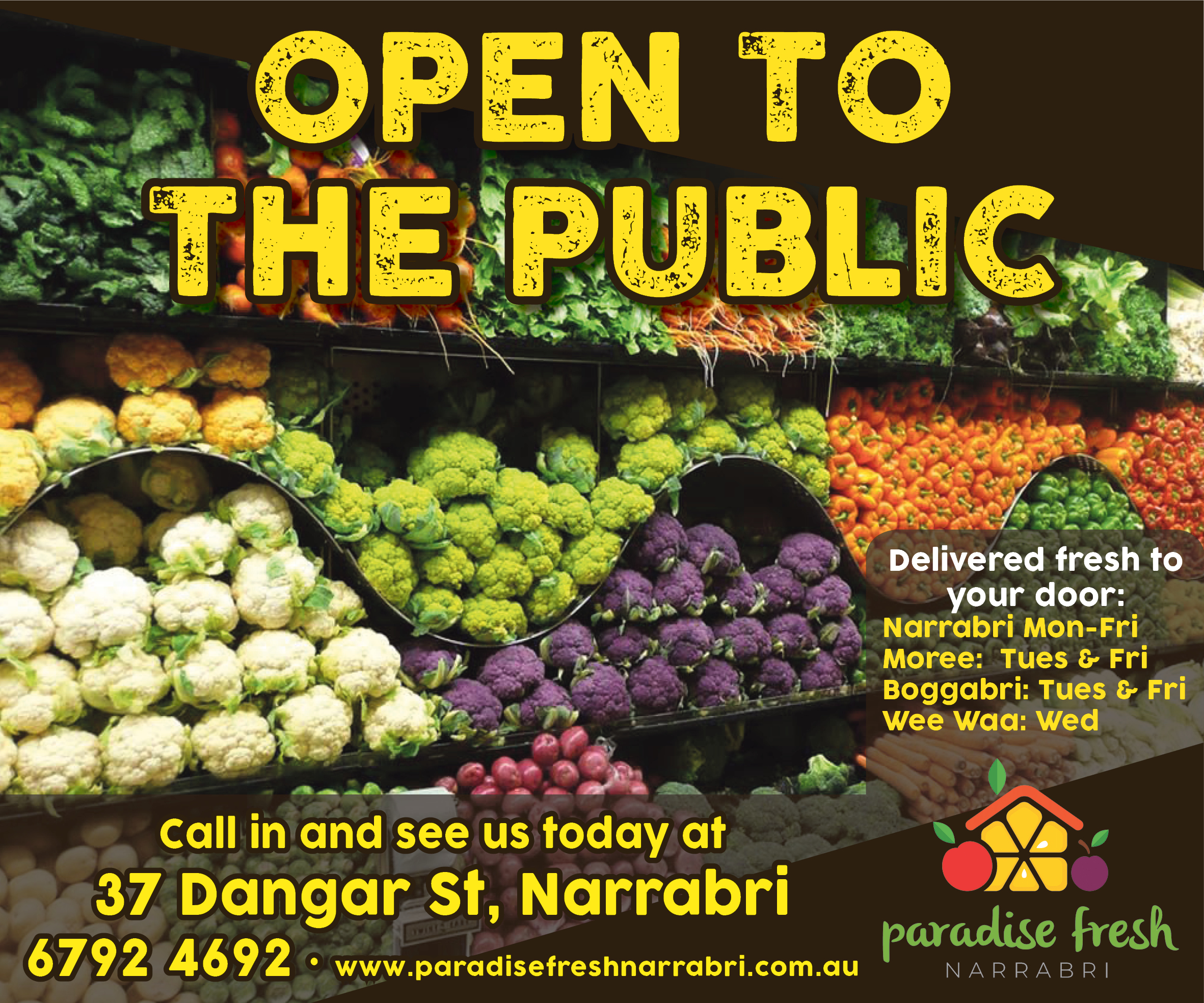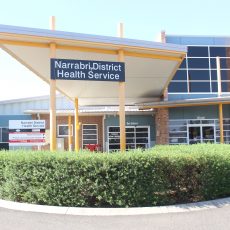Auscott’s Teach the Teacher day educated local school staff all about one of the shire’s biggest exports – cotton – and provided them with educational tools and activities to take back to the classroom.
Local teachers from Wee Waa High School, St Joseph’s Primary School, Narrabri High School, St Francis Xavier’s Primary School, Narrabri Public and Narrabri West travelled out to the Auscott Narrabri Farm Office.
After they all finished classes for the day, the teachers travelled by bus along the Kamilaroi Highway to see the farm and working gin.
The teachers were greeted by gin manager Mark Noble, Auscott regional manager northern NSW Alec Macintosh, Cotton Australia’s education coordinator Jenny Hughes and Auscott’s grower services manager Ben Palmer.
Mr Noble gave the crowd a rundown of Auscott, including what the local team does.
“We’re the only business that has a touchpoint in every stage of the cotton’s life,” Mr Noble said.
“From planting, to growing, marketing and ginning, as well as exporting – Auscott does it all.”
Mr Noble also went into detail about the site’s gins, two of which are housed under the same mega shed.
“Our first cotton gin was built in 1963, and our most recent one was built in 1998, which we still use today,” he said.
“The gin we’re touring today is the largest of any in the Australian cotton industry – having two gins in one space doubles the potential and offers much greater capabilities.”
“This gin is able to process about 2500 bales a day.”
However, this year the ginning process has been set back due to wet weather.
In a typical season, Auscott would start ginning in mid to late-March but this year the farm is still cotton picking even now in May.
This has led to flow-on impacts, such as delays in exporting.
However, Mr Palmer is predicting this will lead to a bumper crop in 2022.
“We usually gin around 240,000 bales in a season but next year, when everyone’s had enough water and if the dam levels continue looking good, we could gin up to 300,000,” he said.
“And that cotton comes from all around the country to be ginned here.”
After meeting and hearing from the four event hosts, the large group was divided into two and given a tour of the operational gin.
The teachers were given a sample of freshly baled cotton to feel first-hand, while the tour guides explained the ginning process.
“After the cotton is picked and baled, it’s bought here to the gin where it’s deseeded,” Mr Palmer told one of the groups.
“The discarded seeds go to a separate silo and this part of the plant is used to feed livestock.”
The groups also toured the inside of the gin, where the deseeded cotton is arranged into smaller bales.
The teachers were given another sample of cotton to feel here, allowing them to see the difference between the plant just after picking as opposed to when it’s finished being processed by the machinery.
Ms Hughes then explained the appeal of Australian cotton.
“Our country grows some of the purest plants, as you can see in this cotton’s lovely white colouring,” she said.
“The whiter the product the greater its value because the colouring/dying process is much easier when you start with clean cotton.”
The teachers then hopped back on to the bus where they were driven across the 12,000-hectare property.
On the ride they were able to see fields of fully-grown cotton plants, as well as newly planted areas and freshly picked plots.
They stopped at one of the fields with matured plants to see and feel the bulbs first-hand, prior to the picking and baling process.
A barbecue dinner was then provided for all attendees.
This was the fourth educational tour of its kind this year, with Mr Palmer predicting it might be the last for 2021.
“We usually host these more frequently throughout the year, but things have just been a bit harder with COVID-19,” he said.
“But I think it’s really important to continue educating local people on the cotton industry.”
Read more stories like this:
- Auscott expanded beyond the Namoi Valley
- New owners for iconic Auscott cotton farms
- Career in medicine awaits 2021 Auscott Scholarship recipient


